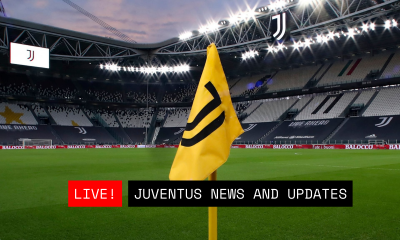Analysis
Paul Pogba’s return: A complex conundrum for Juventus

The return of Paul Pogba to Juventus has left both fans and football analysts puzzled and disappointed.
What was meant to be a revitalizing comeback for Pogba has turned into a financial and tactical setback, raising questions about the decision-making behind this move.
The Italian newspaper La Gazzetta dello Sport sheds light on this enigma, revealing the significant cost incurred by Juventus and the unexpected absence of the French midfielder from the pitch.
The financial quandary
Read more:
The excitement surrounding Pogba’s return was quickly overshadowed by the staggering financial implications it brought.
At an astonishing cost of 50,000 euros per minute, Juventus’ decision to welcome back the charismatic midfielder has proven to be a costly gamble.
This hefty price tag not only intensifies the scrutiny on Pogba’s performance but also prompts reflection on whether such a significant investment was justified.
A season marred by injury
Pogba’s previous season at Juventus was marred by a series of unfortunate injuries, resulting in minimal playing time.
Throughout the season, he managed to accumulate less than 400 minutes on the field, a far cry from the expectations set upon his return.
This persistent struggle with injuries casts doubt on Pogba’s ability to contribute effectively, leaving fans concerned about his overall impact on the team.
Mysterious absence
As the anticipation for the new Serie A season builds, Pogba’s notable absence during matches has become a topic of intrigue.
His inexplicable non-appearance on the field has prompted speculation and confusion among football enthusiasts.
Is his absence due to strategic considerations, lingering fitness issues, or something entirely different?
Uncertainty looms
Paul Pogba’s conspicuous absence has triggered significant uncertainty regarding his potential contributions to Juventus.
While his return was initially anticipated to bolster the team’s midfield and rekindle the brilliance he displayed in his previous tenure with the club, it has instead raised skepticism.
The question lingers: Can Pogba overcome his injury setbacks and replicate his past successes, or is his return destined to be a misguided endeavor?
Strained relations and missed opportunities
Interestingly, Pogba’s absence has not only puzzled fans but also strained potential relations with other clubs.
Reports suggest that even the prospect of joining Saudi Arabian football, often considered a destination for high-profile players, has been affected by the ambiguity surrounding Pogba’s situation.
The lack of clarity has left potential opportunities hanging in the balance, further complicating the narrative surrounding his return.






























































